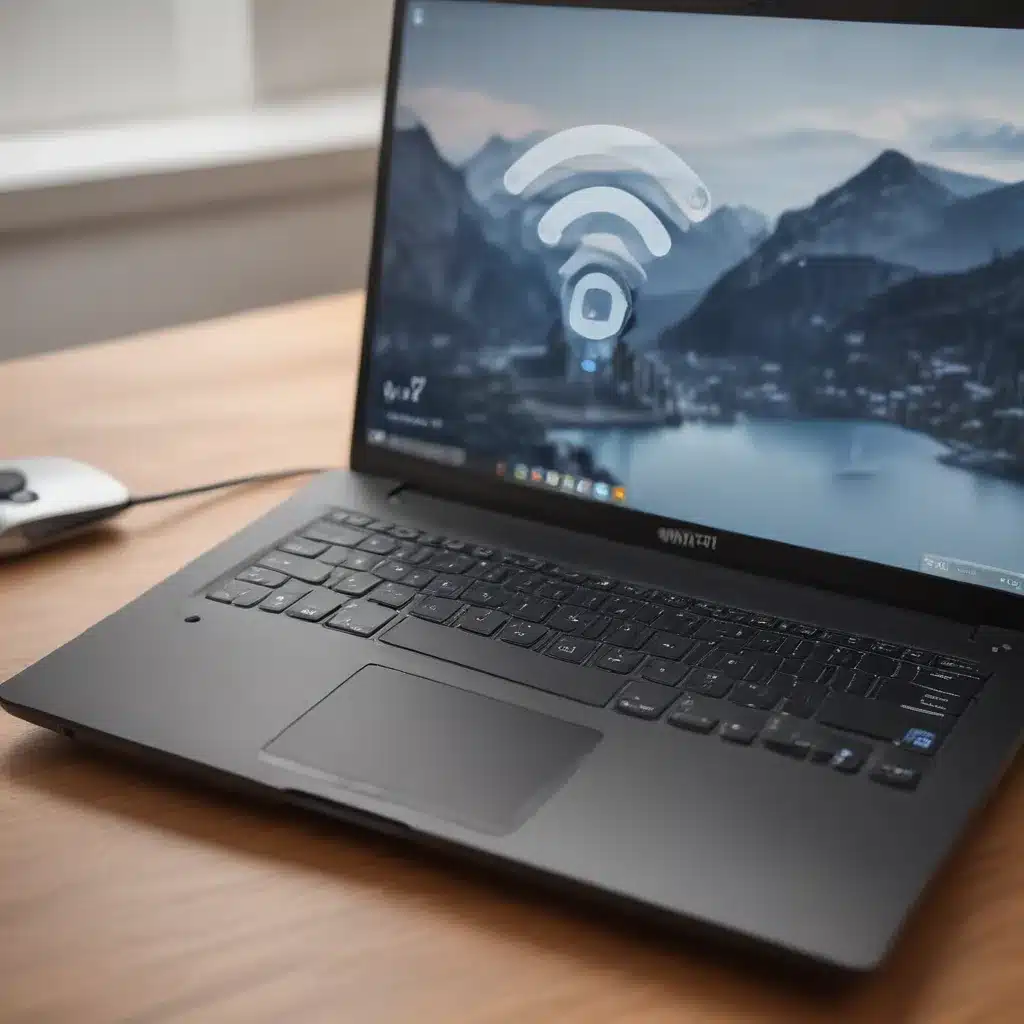Troubleshooting WiFi Woes: A Step-by-Step Guide
Have you ever found yourself staring helplessly at your laptop, watching the WiFi icon blink forlornly, unable to connect to the internet? If so, you’re not alone. Wireless connectivity issues are one of the most common tech problems people face these days. But fear not, my tech-challenged friends! I’m here to walk you through a comprehensive troubleshooting guide to get your laptop’s WiFi back up and running.
Identifying the Problem
The first step in fixing any issue is understanding what’s causing it. When it comes to WiFi troubles, the potential culprits can range from a simple router configuration mishap to a complex network driver incompatibility. To get to the root of the problem, I recommend starting with the basics.
Check if your WiFi is actually turned on. Sounds obvious, I know, but you’d be surprised how often that’s the issue. Look for a physical WiFi switch on your laptop, and ensure it’s in the on position. If you can’t find a physical switch, head to your laptop’s settings and make sure the WiFi is enabled.
Next, rule out any airplane mode shenanigans. Some laptops have a dedicated airplane mode button or setting that can inadvertently disable your WiFi. Give that a quick check and turn it off if it’s on.
Troubleshooting Techniques
Okay, now that we’ve covered the basics, let’s dive into some more advanced troubleshooting techniques. One of the first things I like to try is restarting my modem and router. [1] This simple step can often flush out any temporary glitches and re-establish a solid connection. Just unplug both devices, wait a minute or two, then plug them back in and see if that does the trick.
If that doesn’t work, it’s time to get a bit more technical. Run a quick ping test to check the connection between your laptop and the router. [2] Open up the command prompt, type “ipconfig” to find your default gateway IP address, then ping that address. If you’re getting a response, the issue is likely not with your router or modem, but somewhere else in the network chain.
Updating Drivers and Resetting Network Settings
One common cause of persistent WiFi troubles is an outdated or incompatible network adapter driver. Head to your laptop’s device manager, find the network adapter, and try updating the driver. [3] If that doesn’t work, you can try uninstalling the driver altogether and letting Windows reinstall the latest version.
And if all else fails, the nuclear option – network reset. [4] This will wipe out all your current network settings and start fresh. It’s a bit of a hassle, but it can be a lifesaver when you’ve tried everything else. Just be aware that you’ll need to reconnect to any saved WiFi networks after the reset.
Frequency Band Fiddling
Another potential culprit in the WiFi woes saga is the frequency band your router is using. Many modern routers broadcast on both the 2.4GHz and 5GHz bands, and your laptop may not be playing nice with one of them. [5] Try connecting to the other band and see if that resolves the issue.
The Home Stretch
If you’ve made it this far and your WiFi is still giving you grief, there are a couple more things to try. Check your router’s settings and ensure the SSID (network name) is being properly broadcast. [6] Some routers have an option to hide the SSID, which can cause connection problems.
And finally, take a look at your home layout. [7] Thick walls, interference from other devices, and even the placement of your router can all impact WiFi performance. Try moving your laptop closer to the router or even relocating the router itself.
Wrapping Up
Well, there you have it, folks – a comprehensive guide to troubleshooting those pesky WiFi issues. Remember, diagnosing and fixing connectivity problems can be a bit of a scavenger hunt, but with a methodical approach and a little tech know-how, you can get your laptop back online in no time.
So the next time you find yourself staring at that blinking WiFi icon, don’t panic. Grab a cup of tea, roll up your sleeves, and let’s get to work! With a bit of luck and a healthy dose of patience, you’ll be surfing the web like a pro in no time.
[1] Asurion.com
[2] Microsoft.com
[3] Microsoft.com
[4] Microsoft.com
[5] Asurion.com
[6] Reddit.com
[7] Quora.com













